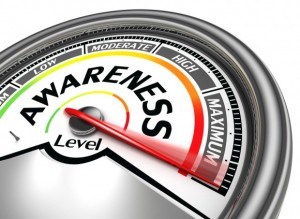Insurance companies that spend their advertising dollars on digital ads can increase their brand awareness far more than they can with television. A study by the digital advertising services firm Rocket Fuel says digital advertising is nine times more effective than TV for insurers.
The research also found that 10 percent of consumers will change insurance providers in the next six months and only 44 percent look at a single quote before buying insurance. It also suggests what attributes of marketing programs work best including whether price information, humans, color backgrounds or animation matter in converting viewers into buyers.
Rocket Fuel’s “Insurance Top-of-Mind Awareness” study surveyed 1,026 consumers in May of this year about insurers in the auto, life, and homeowners’ insurance sectors. Top-of-mind awareness refers to the first brand that comes to a consumer’s mind when asked about a category of products or services.
“Consumers are bombarded with a deluge of options when it comes to choosing an insurance provider — and this competitive climate shows that top-of-mind awareness is key for insurers to win over the customer,” said Robert Jones, research director at Rocket Fuel. “Due to the over-saturation of TV advertising, auto and life insurers can generate better ROI from their marketing programs by shifting budget from TV channels into digital, particularly digital display, which is currently under-utilized by most providers.”
Display advertising is the strongest positive feature in driving top-of-mind awareness for auto and life insurance providers, particularly against overcrowded TV channels, according to the study. For every $1 million an auto insurer spent on digital or display advertising, the brand was likely to see the biggest lift in top-of-mind awareness compared to the same spend in TV, print, search or radio.
The study says that 1 in 10 consumers are likely to change providers in the next six months, with price being the most likely factor (49 percent) in the decision to change providers, followed by reputation (17 percent). For consumers that begin their journey online, they are most likely to complete it online as well.
Also, consumers are more likely to sign up for new insurance or request a quote on Thursdays and in the evenings between 6 and 9 p.m. and are most likely to convert within eight hours of exposure to an ad.
Top-of-Mind Leaders
Other findings from the study include:
- Top-of-mind awareness is highly correlated with market share for both auto insurance (0.83) and homeowner’s insurance (0.87), and modeling either as a function of ad spend yielded the same feature set.
- In the auto insurance sector, GEICO (21 percent), State Farm (19 percent) and Allstate (16 percent) lead top-of-mind awareness.
- Cross-channel ad spend was a key predictor of top-of-mind awareness for auto and life insurance providers, with digital display ad spend being nine times more effective at driving top-of-mind awareness than TV.
- Insurance advertisers can shift top-of-mind awareness by reigning in spending to competitive levels on traditional channels and increasing spend on newer and underserved channels, such as display, mobile, and video.
What Works, Doesn’t in Advertising
Rocket Fuel said it found five key attributes for insurance marketing programs to get the best value from online display advertising:
- Animating ads does not improve conversion rates: While insurance ads see a 64 percent boost in click-through rates as a result of animation, it provides no discernible improvement in conversion rates.
- Blue and red backgrounds perform best: Insurance ads with red or blue backgrounds tend to have conversion rates 20 percent higher than the average, while also producing better click-through rate performance.
- Human faces improve conversion rates: Insurance ads featuring a person or human face generate conversion rates more than 177 percent higher than those without a human or face.
- “Apply now” is the most effective call to action: Among calls to action, “apply now” had the highest conversion rates, outperforming “get a quote” by 80 percent.
- Price-focused messaging doesn’t matter: Insurance ads without pricing information perform as well as those that include it, possibly due to over-saturation of price-focused messaging in insurance ads already, according to Rocket Fuel.
Source: Rocket Fuel/ This story previously appeared in our sister publication Insurance Journal.






















 Root, Hyundai Capital America Strike Embedded Insurance Deal
Root, Hyundai Capital America Strike Embedded Insurance Deal  The Insurance Industry’s Talent Crunch: Attracting and Retaining Gen Z
The Insurance Industry’s Talent Crunch: Attracting and Retaining Gen Z  Insurance Industry Contemplates Knock-On Effect of Tariffs to Claims, Consumers
Insurance Industry Contemplates Knock-On Effect of Tariffs to Claims, Consumers  State Farm’s California Emergency Rate Request Dropped to 17%
State Farm’s California Emergency Rate Request Dropped to 17% 









